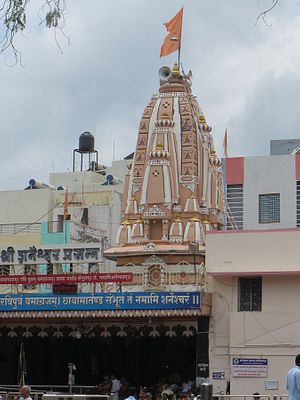For centuries, many temple managers in India have used “tradition” as an excuse to stop women from entering a place of worship. But increasingly women are fighting for their right to pray by bringing their cases to court.
During the recent landmark Sabarimala temple case, the Supreme Court judges held that women cannot be restricted from entering holy sites such as the Sabarimala Ayyappa Hindu temple in Kerala, India.
The Sabarimala temple prohibited women from entering, arguing that they are impure while menstruating. A controversy was stoked when the board’s president wanted to install machines outside the temple to check if women who are menstruating are trying to go into the temple.
A petition was launched by the Indian Young Lawyers’ Association (IYLA) to the Supreme Court. The Supreme Court told the board, which manages the popular Sabarimala Ayyappa Hindu temple in Kerala, to explain why female worshipers are banned.
“What right does the temple have to forbid women from entering any part of the temple? Can you deny a woman her right to climb Mount Everest? The reasons for banning anything must be common for all,” Justice Dipak Misra, head of a three-judge bench, was quoted as saying in an online article on Reuters.
“Gender discrimination in such a matter is unacceptable,” he added.
This was the latest effort by women to demand their right to enter a place of worship. Denying or restricting a woman’s entry to a place of worship has been seen as an infringement of her constitutional rights. The struggle for equal access to temples triggered a public commotion, including a social media firestorm on Twitter with the hashtag #RightToPray.
In the last few months, many temple managers that kept women out of holy places have been facing unprecedented legal and social challenges. In January this year, several hundred women took part in a march from the city of Pune towards the Shani Shingnapur temple located in the Ahmednagar district in the state of Maharashtra. They were trying to break a management restriction that bars female worshipers from entering the temple’s inner sanctum.
“Our aim was to enter the sanctum sanctorum of the 350-year-old temple, which is forbidden to women,” Trupti Desai, member of a local women’s rights group, the Bhumata Brigade, was quoted as saying in an article on the BBC.
Desai decided to lead the protests along with other women by entering the temple after last year’s media reports that the temple trust had carried out a “purification ritual” after a female devotee had climbed the prayer platform to touch a deity.
According to Desai, men are permitted on to the prayer platform if they make a big donation. However the temple authorities dismissed the claims and said that men are not permitted onto the prayer platform either.
The Shani case was brought to the Mumbai High Court, with the plaintiffs alleging that such a restriction was in violation of the fundamental rights of women. The Shani Shingnapur Temple Trust in Ahmednagar was ordered to open its inner sanctum to women following a court order from the High Court.
Although the legal challenges were unrelated, they show that Indian women are becoming increasingly vocal and are not hesitating to bring their cases to court. Many temples in India have restrictions based on regressive traditions. Not only are these restrictions unconstitutional, they expose a larger set of discrimination.
Roshni Kapur is an independent journalist based in Singapore.

































